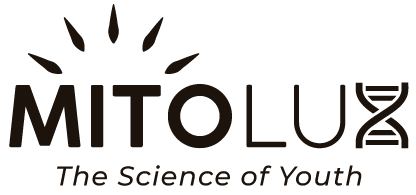The sun, the blazing ball of fire at the center of our solar system, has long been known for its role in providing life-sustaining energy. Yet, modern understanding reveals that its benefits on human health go far beyond just aiding in Vitamin D synthesis. As we uncover more about the multifaceted ways sunlight impacts our well-being, it becomes evident that our bond with the sun is even deeper than once believed.
The Circadian Symphony and the Maestro Called Sun
Our bodies operate on a roughly 24-hour cycle known as the circadian rhythm, which governs a range of functions, from sleep-wake cycles to hormone release. Sunlight, particularly its blue component, plays a pivotal role in regulating this rhythm. Exposure to natural morning light helps set our internal clock, enhancing sleep quality and overall alertness1.
1 Wright Jr, K. P., et al. (2013). Entrainment of the human circadian clock to the natural light-dark cycle. Current Biology, 23(16), 1554-1558. Direct link
A Mood Brightened by Rays of Sun
The impact of sunlight on mood, especially in warding off depression, cannot be overstated. Sunlight spurs the production of serotonin, often dubbed the 'feel-good' neurotransmitter. This is why extended periods of darkness or lack of sunlight can lead to conditions like Seasonal Affective Disorder (SAD)2.
2 Rosenthal, N. E., et al. (1984). Seasonal affective disorder. A description of the syndrome and preliminary findings with light therapy. Archives of general psychiatry, 41(1), 72-80. Direct link
Sunlight's Invisible Touch: Red Light and Near-Infrared (NIR)
Emerging research is shining a spotlight on the benefits of red and near-infrared light, components of sunlight. These wavelengths have been shown to stimulate mitochondrial activity in cells, enhancing energy production and promoting skin health. Additionally, they play a role in collagen production and may even aid in wound healing3.
3 Avci, P., et al. (2013). Low-level laser (light) therapy (LLLT) in skin: stimulating, healing, restoring. Seminars in cutaneous medicine and surgery. Direct link
The Shadow Side: Health Concerns of Sunlight Deficiency
Our indoor-centric lifestyles, dominated by artificial lights, have nudged us away from these sunlit benefits, and the health implications are manifold:
- Disturbed Sleep Patterns: The absence of sunlight exposure leads to disrupted circadian rhythms, resulting in sleep disorders and a reduced quality of life4.
- Reduced Immune Functionality: Less exposure to sunlight translates to lower Vitamin D levels, which is critical for immune system function, thus making individuals more susceptible to infections5.
- Elevated Depression Risk: Extended durations indoors, away from sunlight, can exacerbate feelings of sadness and lethargy, and can even lead to chronic depressive conditions6.
4 Gooley, J. J., et al. (2011). Exposure to room light before bedtime suppresses melatonin onset and shortens melatonin duration in humans. The Journal of Clinical Endocrinology & Metabolism, 96(3), E463-E472. Direct link
5 Aranow, C. (2011). Vitamin D and the immune system. Journal of Investigative Medicine, 59(6), 881-886. Direct link
6 Gloth III, F. M., Alam, W., & Hollis, B. (1999). Vitamin D vs broad spectrum phototherapy in the treatment of seasonal affective disorder. The Journal of Nutrition, Health & Aging, 3(1), 5-7. Direct link
Conclusion
It's clear: our bond with the sun, an age-old relationship honed over millennia, is more intricate and essential than we ever imagined. As we forge ahead in our modern world, let's not forget this natural ally, its golden rays promising a spectrum of health benefits. It's high time we step out, soak in some sunlight, and embrace its holistic nourishment.


